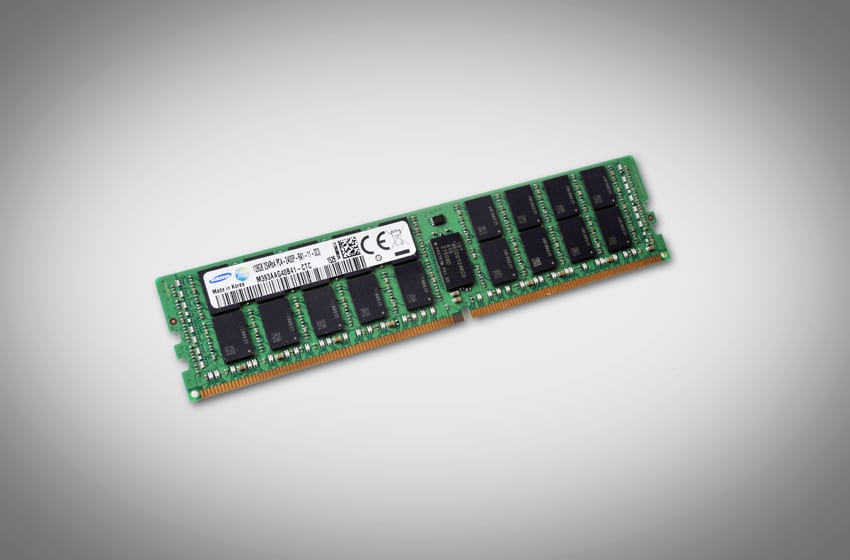
Samsung Electronics has announced they have begun mass producing the industry’s first 4GB DRAM package based on the second-generation High Bandwidth Memory (HBM2) interface. Designed for HPC, advanced graphics, network systems, and enterprise servers, Samsung indicates that it will boast more than seven times the speed of current DRAM performance limitations, resulting in faster responsiveness for high-end computing tasks. This follows the company’s introduction of a 128GB 3D TSV DDR4 RDIMM last October.
Pictured, 128GB 3D TSV DDR4 RDIMM
Leveraging Samsung’s most efficient 20-nanometer process technology and advanced HBM chip design, the 4GB HBM2 package is created by stacking a buffer die at the bottom and four 8Gb core dies on top (a single die contains over 5,000 TSV holes). Samsung explains that they then vertically interconnect by TSV holes and microbumps. Samsung’s new DRAM package also doubles the previous generation’s bandwidth with 256GBps. In addition, it allows for enhanced power efficiency by doubling the bandwidth per watt over a 4Gb-GDDR5-based solution all the while embedding ECC functionality to for high reliability.
Samsung indicates that they plan to produce an 8GB HBM2 DRAM package within this year, which will allow designers benefit from space savings by over 95 percent compared to GDDR5 DRAM. As a result, more optimal solutions for compact devices that require high-level graphics computing capabilities will be possible.
Samsung adds that they will gradually increase the rate of production volume for its HBM2 DRAM over the course of 2016 to meet the market demand for network systems and servers.
Sign up for the StorageReview newsletter

